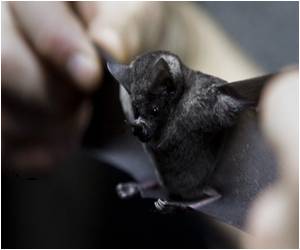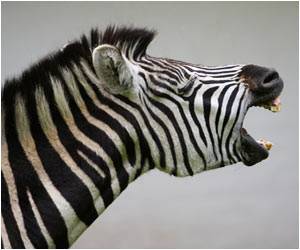In order to survive – to find food and shelter or avoid predators, animals navigate and orient themselves.

The question of how animals orient themselves in space has been extensively studied, but until now experiments were only conducted in two-dimensional settings. These have found, for instance, that orientation relies on "place cells" – neurons located in the hippocampus, a part of the brain involved in memory, especially spatial memory. Each place cell is responsible for a spatial area, and it sends an electrical signal when the animal is located in that area. Together, the place cells produce full representations of whole spatial environments. Unlike the laboratory experiments, however, the navigation of many animals in the real world, including humans, is carried out in three dimensions. But attempts to expand the scope of experiments from two to three dimensions had encountered difficulties.
One of the more famous efforts in this area was conducted by the University of Arizona and NASA, in which they launched rats into space (aboard a space shuttle). However, although the rats moved around in zero gravity, they ran along a set of straight, one-dimensional lines. Other experiments with three-dimensional projections onto two-dimensional surfaces did not manage to produce volumetric data, either. The conclusion was that in order to understand movement in three-dimensional, volumetric space, it is necessary to allow animals to move through all three dimensions – that is, to research animals in flight.
Ulanovsky chose to study the Egyptian fruit bat, a very common bat species in Israel. Because these are relatively large, the researchers were able to attach the wireless measuring system in a manner that did not restrict the bats' movements. Developing this sophisticated measuring system was a several-year effort. Ulanovsky, in cooperation with a US commercial company, created a wireless, lightweight (12 g, about 7% of the weight of the bat) device containing electrodes that measure the activity of individual neurons in the bat's brain.
The next challenge the scientists faced was adapting the behavior of their bats to the needs of the experiment. Bats naturally fly toward their destination – for example, a fruit tree – in a straight line. In other words, their normal flight patterns are one-dimensional, while the experiment required their flights to fill a three-dimensional space.
The solution was to be found in a previous study in Ulanovsky's group, which tracked wild fruit bats using miniature GPS devices. One of the discoveries was that when bats arrive at a fruit tree, they fly around it, utilizing the full volume of space surrounding the tree. To simulate this behavior in the laboratory – an artificial cave equipped with an array of bat-monitoring devices – the team installed an artificial "tree" made of metal bars and cups filled with fruit.
Advertisement
A closer examination of the areas for which individual place cells are responsible provided an answer to a highly-debated question: Does the brain perceive the three dimensions of space as "equal," that is, does it sense the height axis in the same way as that of length or width? The findings suggest that each place cell responds to a spherical volume of space, i.e., the perception of all three dimensions is uniform. The researchers note that for those non-flying animals that essentially move in flat space, the different axes might not be perceived at the same resolution. It may be that such animals are naturally more sensitive to changes along the length and width axes than that of height. This question is of particular interest when it comes to humans because on the one hand, humans evolved from apes that moved in three-dimensional space when swinging from branch to branch, but on the other hand, modern, ground-dwelling humans generally navigate in two-dimensional space.
Advertisement
Source-Eurekalert









